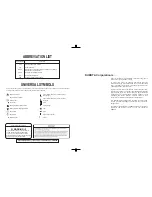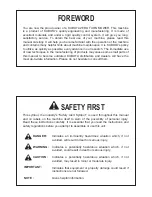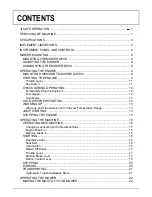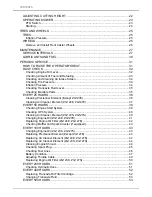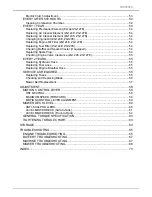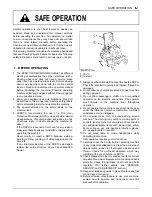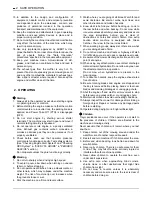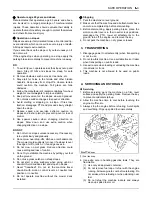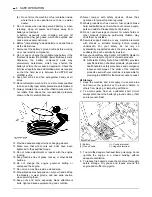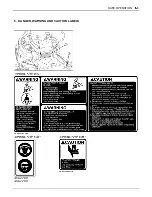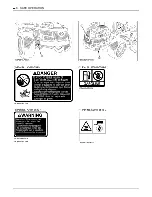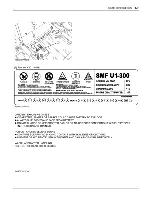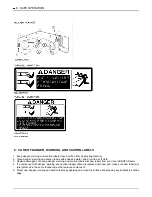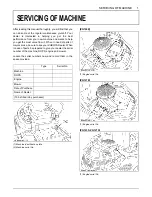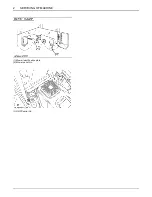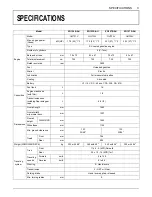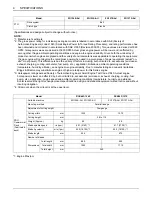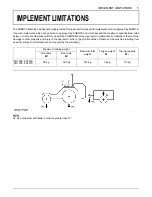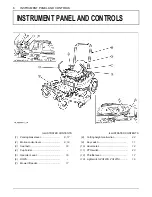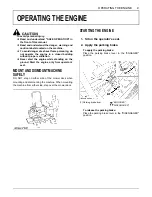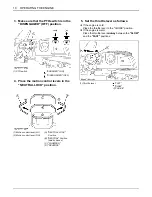
-
3
SAFE OPERATION
C
Operators, age 60 years and above
Data indicates that operators, age 60 years and above,
are involved in a large percentage of machine-related
injuries. These operators should evaluate their ability to
operate the machine safely enough to protect themselves
and others from serious injury.
C
Operation on slopes
Slopes are a major factor related to loss-of-control and tip-
over accidents, which can result in severe injury or death.
All slopes require extra caution.
If you cannot back up the slope or if you feel uneasy on it,
do not mow it.
If the engine stops when operating on a slope apply the
parking brake immediately to prevent machine run away.
DO
1. To avoid tip over, operate across the slopes not up and
down. Stay off hills and slopes too steep for safe
operation.
2. Remove obstacles such as rocks, tree limbs, etc.
3. Stay alert for holes in the terrain and other hidden
hazards. Keep away from drop-offs. Uneven terrain
could overturn the machine. Tall grass can hide
obstacles.
4. Follow the manufacturer's recommendations for wheel
weight or counterweights to improve stability.
5. Keep all movement on the slopes slow and gradual.
Do not make sudden changes in speed or direction.
6. Avoid starting or stopping on a slope. If tires lose
traction, disengage PTO and proceed slowly straight
down the slope.
7. Reduce speed and exercise extreme caution on
slopes and in sharp turns to prevent tip-over or loss of
control.
8. Use special caution when changing direction on
slopes. Slow down, and use extra caution when
changing direction on a slope.
DO NOT
1. Do not turn on slopes unless necessary. If necessary,
turn uphill slowly and gradually.
2. Do not mow near drop-offs, ditches, or embankments.
The mower could suddenly turn over if a wheel is over
the edge of cliff or ditch, or if an edge caves in.
3. Do not mow on wet grass. Reduced traction could
cause sliding and loss of control.
4. Do not try to stabilize the machine by putting your foot
on the ground.
5. Do not use grass catcher on steep slopes.
6. Do not start or stop suddenly when going uphill or
downhill. Avoid sudden start and stops on slopes.
7. Never "freewheel". Do not let the machine travel
downhill with motion control levers at neutral lock
position or in neutral.
8. Do not operate machine without the mower deck
installed.
C
Stopping
1. Park the machine on level ground.
2. Make sure that the machine and all attachments have
come to a complete stop before dismounting.
3. Before dismounting, apply parking brake, place the
motion control levers in their neutral lock positions,
disengage the PTO, lower all attachments to the
ground, turn off the engine, and remove the key.
4. Do not park the machine on dry grass or leaves.
1. Disengage power to attachment(s) when transporting
or not in use.
2. Do not tow this machine. Use a suitable truck or trailer
when transporting on public roads.
3. Use extra care when loading or unloading the machine
into a trailer or truck.
4. This machine is not allowed to be used on public
roads.
C
Servicing
1. Before servicing, park the machine on a firm, level
surface and apply the parking brake. Remove the key
to prevent accidental start-up.
2. Allow the machine time to cool before touching the
engine, muffler, etc.
3. Always stop the engine before refueling. Avoid spills
and overfilling. Wipe up spilled fuel immediately.
4. Use extra care in handling gasoline fuels. They are
flammable.
(1) Use only an approved container.
(2) Do not remove fuel cap or refuel with the engine
running. Allow engine to cool before refueling. Do
not smoke while refueling or when standing near
fuel.
(3) Do not refuel the machine indoors and always
clean up spilled fuel or oil.
3. TRANSPORTING
4. SERVICING AND STORAGE
(
1) Fuel tank cap


